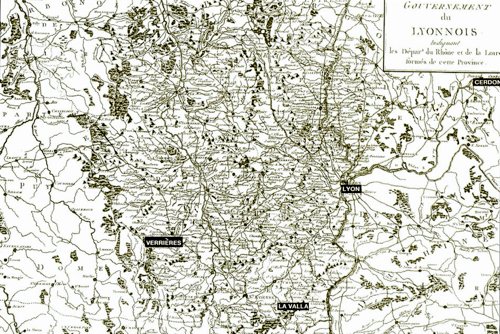A kind of obsecurity

DECLAS:
On leaving the seminary, we said that each one would go wherever Providence would send him until the time when we would come together and go to Le Puy, where the first idea of the Society had been given.
MAYET:
The thing that struck you about Father Courveille’s words was the comparison with the Jesuits?
TERRAILLON:
Yes. When we gave shape to the project, we used to say: “There is a Society of Jesus, there will be a Society of Mary. There is a body which bears the name of Jesus, another must bear the name of Mary, That was our dominant thought. What the Jesuits do under their appellation indicated to us what we must do under ours.
COLIN:
To people who are not in the know, the beginnings of the Society present, at first sight, a kind of obscurity and follow an exceptional course. This comes from the fact that several people conceived almost simultaneously the same project of the Society and worked separately for its implementation. Father Courveille had the merit, in 1815 and 1816, of manifesting it exteriorly, and 11 or 12 seminarians from the major seminary joined him to work together for the project.
Then Father Courveille and his young associates became priests at the end of the school year of 1816, were appointed to the parish ministry in various places, and gradually forgot about their plans, except for two of them, namely Father Champagnat, who was appointed curate at La Valla and who immediately set out to establish the branch of the teaching brothers….
MAYET:
And yourself, Jean-Claude Colin….
COLIN:
… who became curate in a parish in the department of Ain, and who used the free time left by the ministry tojot down on paper the first thoughts which were to serve as a basis for the constitutions. He was filled interiorly with a strong confidence equivalent to a kind of cer- tainty that the project came from God and that it would take shape in the long run.
MAYET:
Where does Jean-Claude Courveille fit into the story of the origins of the Marist work?
COLIN:
But before coming to the seminary I had the idea of forming a society which, it’s true, would be dedicated to Our Lady, but I didn’t have the name “Society of Mary”. That name came from Father Courveille.
MAYET:
So you had this idea before coming to the major seminary of Lyon?
COLIN:
Yes, yes, definitely. Yes, before coming to the major seminary of Lyon. In fact, I had even written up a small project. When I was still very young, before I began my classical studies, I had a burning desire to withdraw alone into a forest, to live far away from the world: and since this didn’t seem possible, I went to the minor seminary of St Jodard. So, I can only admire the ways of Providence which led Father Courveille to reveal the project of the Society of Mary. I would never have had the courage to make this idea known. And so, later, when the thing was known, I was able to work at it without appearing to be its creator.
– The Mayet Memoirs
The consecration of Fourviere was followed by a dispersal. Of the 12 seminarians, seven abandoned the project, two waited for the others to do something and the three who acted were appointed to the extremities of the diocese.
Jean-Claude Courveille was appointed curate at Verrieres in the western extreme. From the start he made efforts to put the Marist project in motion. He attempted to set up an association of lay women there. Then, when he was moved to Epercieux, he tried to establish a community of brothers. During this time he kept in touch with both Marcellin Champagnat and Jean-Claude Colin. He was considered the central figure until 1826, when the first of his difficulties began. From the, he began to disappear from the story.
Marcellin Champagnat was sent to La Valla In the south of the diocese. Called to the bedside of a dying boy who had no knowledge of the faith or of God, Marcellin’s conviction that he had been given the commission to set up a branch of brothers was even more confirmed. Less than five months after his arrival at La Valla, he had invited two young men, aged 22 and 14, to begin the branch of brothers. Soon eight more arrived, the oldest 24, and the youngest 10.
Jean-Claude Colin was appointed to Cerdon, a northern outpost, where his brother Pierre was the Parish Priest. After a short time there, he spoke to his brother of the plan to form a Society of many branches: priests, religious brothers and sisters, and lay people. Pierre became enthusiastic, and suggested that two young women whom he knew in the parish where he had previously worked be invited to join them at Cerdon. In 1817, Jeanne-Marie Chavoin and Marie Jotillon joined the Colin brothers in the parish of Cerdon. Jeanne-Marie Chavoin was to become the foundress of the Marist sisters.
And so, at the end of 1817, eighteen months after the Fourviere promise, the group numbered four priests separated by a great distance, two young brothers at La Valla, and two young women at Cerdon. Already three principal characters have emerged: Champagnat, Colin and Chavoin.
It is time to meet each one.